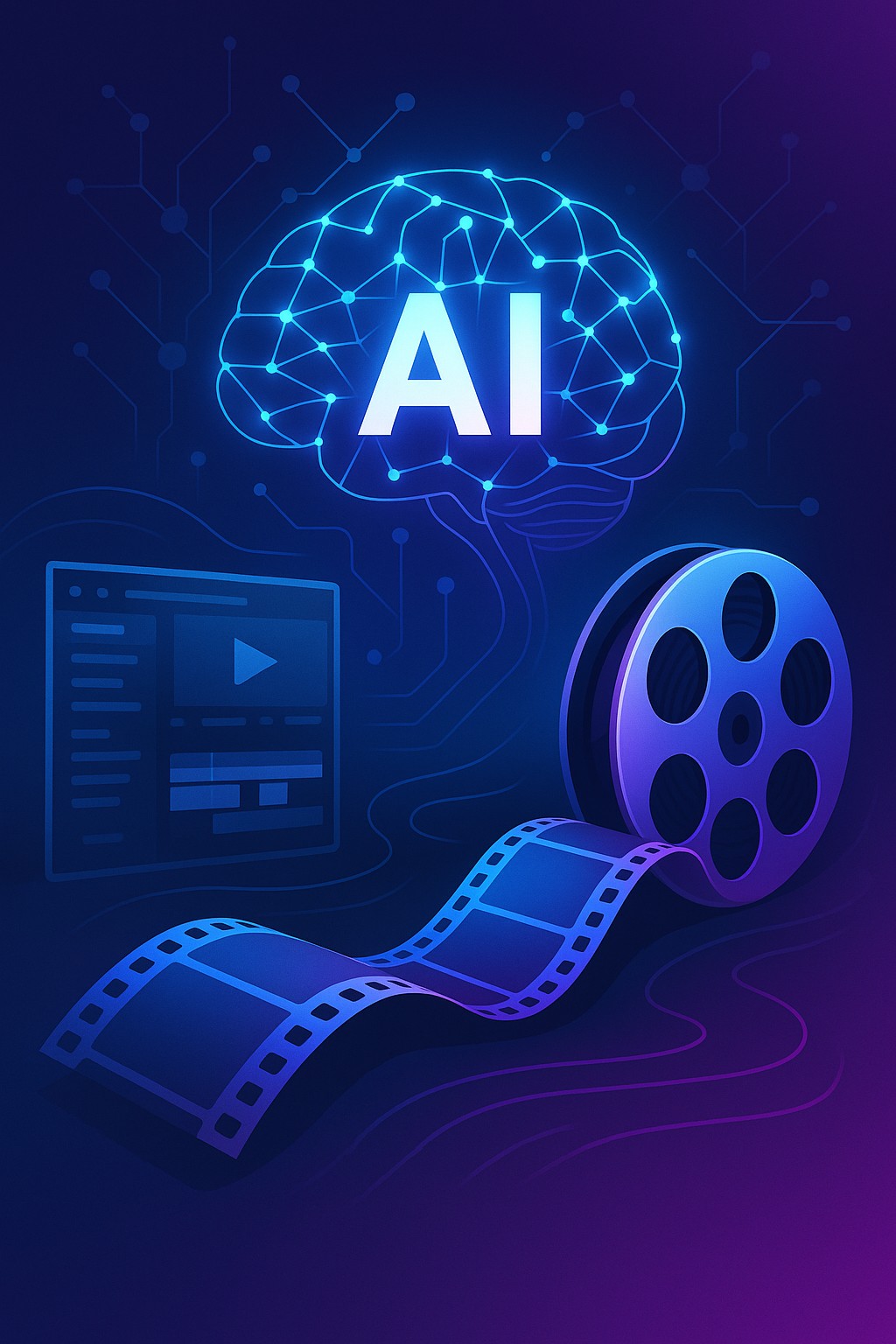Artificial Intelligence & Video Editing
Discover how AI is transforming the editing process and opening up new creative possibilities.

What Is AI‑Powered Video Editing?
Traditionally, video editing and post‑production have been labour‑intensive tasks carried out by skilled professionals who sift through hours of footage to assemble a cohesive story. Generative AI video tools are reshaping this process. They automatically analyze footage, detect issues and suggest fixes—such as stabilizing shaky shots, removing noise and correcting color and exposure.
AI Editing vs. Generative AI
The AI tools available today fall into two broad categories:
- AI tools for editing: traditional editing platforms enhanced with AI algorithms that scan raw footage, detect patterns and recommend edits. These tools can speed up the workflow by automatically trimming pauses, organizing clips or suggesting transitions.
- Generative AI tools: go a step further by generating new video content or altering existing footage based on text prompts. They can create new scenes from scratch or transform still images into video.
Key Features of AI‑Powered Editing
Modern AI editing software combines traditional tools with intelligent features that improve both video and audio quality. Common capabilities include auto or manual color correction, exposure and contrast control, noise reduction, motion stabilization and automated sound cleaning. Some cutting‑edge platforms provide innovative features, such as:
- Text‑based editing: transcribes video footage and lets you edit by cutting or rearranging the text; changes are synced automatically to the video.
- Vocal remover: separates vocals from music and cleans up poor audio.
- Frame interpolation: upscales low‑frame‑rate footage to create smooth motion.
- Text‑to‑video generation: turns a text description into new video footage or modifies existing clips to match your prompt.
- AI avatars: create realistic digital presenters whose speech and expressions can be driven by text inputs.
Benefits & Considerations
By automating repetitive tasks and enhancing footage quality, AI gives editors more time to focus on storytelling and creative decisions. It can reduce production costs and accelerate turnaround times. However, AI is not a replacement for human creativity. Editors still need to guide the narrative, make aesthetic choices and ensure authenticity. When working with generative AI, be mindful of ethical considerations, such as representation and copyright.
Emerging AI Tools & Features
Recent AI platforms push editing far beyond traditional workflows. Some allow you to build multi‑scene videos in minutes and duplicate scenes to maintain continuity across a project. Others include text‑based trimmers that automatically remove bad takes, silent pauses and unwanted segments, along with title generators that create engaging on‑screen titles; they also offer noise removal, auto‑zoom and chapter‑creation tools to polish your edit. Generative video editors can convert a written idea into a complete short video, generate faceless videos with AI‑created scripts and voiceovers, and provide libraries of templates and plug‑ins for backgrounds, titles and effects. Hybrid tools blend generative AI with traditional editing: they let you insert B‑roll into a text transcript, remove backgrounds or adjust eye contact with a single click, adapt aspect ratios automatically and even generate video descriptions and blog posts for publication. Some platforms analyze thousands of clips to identify the most viral hooks, assign virality scores, provide co‑pilot search for specific segments and insert contextually relevant B‑roll automatically.
Why It Matters
These innovations aim to expand what’s possible in editing by harnessing artificial intelligence to simplify laborious tasks. When used responsibly, they make the process faster and more effective, free editors to focus on storytelling, and help content reach broader audiences—including localized versions in multiple languages.
The AI revolution is just beginning. As algorithms continue to improve, expect even more powerful tools to emerge—ones that free you to concentrate on the artistry of editing while letting the machine handle the busy work.

